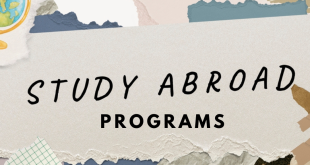An academic resume is a comprehensive list of your educational, teaching, and research background in the academic field. Much more comprehensive than a regular resume, it serves as a snapshot of your curricular and extracurricular skills and qualifications. It’s also often required as part of your application for a degree program or any research/faculty position advertised by a college or university. Knowing how important this type of resume is for your admission to a master’s or doctoral program, we’ve put together some tips and tricks to help you create an effective and compelling academic CV.
Table of Contents
What is The Purpose of an Academic Vs Regular CV?
As its name states, an academic CV is aimed at the academic researchers you’ll be sending it to. Both traditional and academic resumes aim to set you apart from other applicants. They also both highlight your educational background, achievements, experiences and skills.
The difference between the two is the type and relevance of the information it contains, which vary depending on the recipient of the resume. Moreover, the professional CV includes details on the candidate’s suitability for a specific job position or career field – focusing more on your professional contribution to the company in which you want to be hired.
When it comes to the purposes of an academic resume, it mainly serves as a comprehensive document highlighting your abilities, interests and achievements to admission officers, grant committee members or senior researchers. And they usually need to get a sense of who you are beyond your grades.
Furthermore, an academic CV has more pages and looks a lot more like a “list” than the professional one. And lastly, it’s a supporting document which offers context and additional evidence for the information in your application essay and recommendation letters.
Structure: What Should I Put on my Academic CV?
Before crafting your academic resume and all the elements to include in it, you should first consider its length, structure and format.
While 2 pages is perfect for a master’s application resume, research positions tend to be longer as they include field-specific details. In that case, 4 pages are optimal enough, as long as all the information in the resume is relevant to the position you’re applying to. Clearly separate each section with headings, and put descriptions in bullet list form and entries in reverse chronological format (starting with the most recent in date).
As for the structure, you should always start with a header containing your key contact information. Like for a regular resume, this section should provide insights that make your reader want to learn further about you. Next come your personal details and a summary of your background experience.
Other important sections are those talking about your education, then any other academic experience you’ve had, including publications and research you took part in. Don’t forget to add any prizes and funding you might have obtained, any teaching or relevant work you might have participated in (especially for a PhD position).
Should I Put GPA on an Academic CV
Another legitimate question regarding what to include and what to leave out of your academic CV concerns your GPA. Your Grade Point Average (GPA) represents the quantitative measurement of how well you did in your previous studies. It can therefore be useful (but also detrimental in certain cases) to include your GPA in your resume.
More precisely, it can be interesting to include it if the GPA is 3.5 or above. Below that number, it might not be a good idea, as a higher GPA is often connected to a high performance. On the other hand, if you have graduated with honors from your previous courses, listing your GPA is nothing but advantageous.
In the case you choose to list your GPA in your academic CV, make sure to put it in the education section, next to the earned degree. And it goes without saying, but state the number accurately, without exaggeration. And lastly, add to it any academic honors or awards you have received.
Other mandatory sections to add
Add at least two references, as they give your reader confidence as to your eligibility in the subject area you applied for. Add also, if any, professional affiliations or memberships and conference and seminar attendances. If required for the program you’re applying to, add also your IT skills and language proficiency information.
Lastly, towards the end of your resume, add any interests or hobbies. Being a lot shorter than other sections, this part provides some information about your extracurricular activities and what you do in your personal time. This can be any sports or any university societies you are related to. Add as well any accomplishments you might have in these hobbies and interests.
How Do You Make an Academic CV: Best Practices and Tips
Being a written record of your educational achievement, an academic resume usually includes nearly all aspects of your academic background. Here are some tips on how to craft a compelling CV.
Present Info Concisely Showcasing Results
First things first, be concise and make it easy to read. Avoid overcharging with long prose and long paragraphs. Additionally, use simple language, getting rid of jargon, clichés and irrelevant terms that may distract from the main details you want your reader to see.
Also, use academic tone and to help your reader scan your CV quickly, use clear sections and headings. Moreover, in describing your experience, instead of just enumerating your actions/achievements, display also the impact you’ve made or even the skills you use to get these results.
Mind the Formatting
When it comes to the layout of your resume, utilize a format that shows your accomplishments clearly and consistently. This way, your reader will be able to quickly find any information they’re looking for without too much scrolling. The same goes for the font and style. Choose legible fonts in normal size, which is 11 or 12 pts.
Between the headings, subheadings and the main text, don’t go beyond two font types. Use bold and italics smartly, but avoid underlining, as the reader might wrongly associate it with hyperlinks. Lastly, use bullet points for further clarity and stay away as much as possible from too bold design elements. In other words, keep it simple, sober, and consistent!
Make Education The Main Theme
Needless to say, your education accomplishments, experiences and other relevant details should be the main focus of your academic CV. It should emphasize your academic achievements over professional ones, and therefore go in greater details with the educational part. For that, start your resume with your degrees and certificates, then go on in decreasing order of importance.
Be accurate with dates and always start with the most recent information at the top and the oldest at the end of each section. Moreover, for a more impactful and engaging CV, use active form as much as possible. And for the sake of customizing the document to the program / post you’re applying for, use academic tone and language related to your study field.
Tailor Your CV to Your Audience
You will most probably send multiple applications, responding to different requirements. Make sure therefore to tailor your resume based on your reader’s expectations. Avoid being generic in order to stand out, and tweak your CV to shed light on the academic details that are relevant to each audience.
As already mentioned previously, always start with your current or most recent details. And for each application, make it clear that you are a good fit for the spot you’re aiming to get.
Proofread and Edit
In order to show you are professional using your CV, then proofreading and careful editing are essential. If you’re applying for a master or a PhD program, proofreading is a skill you should have learned in your undergraduate years, if not before.
Spelling mistakes will prevent you from getting a good impression from your audience, so do everything in your power to send an error-free document. Our advice is to re-read your CV a few hours or days after you’ve finished crafting it. And right before you send it, ask a friend or a family member to give it a final check.
Make use of the resources available to you
This includes asking someone in your field of specialization for feedback and help on how to structure your CV. Keep in mind that you must customize the resume to respond to the expectation of specific readers from specific departments. If they are willing, ask for a sample CV to help you craft your own.
Additionally, take advantage of any other resources available to you, including the career services / orientation center of your university. These usually have the resources if not the expertise to help you adjust your CV to suit your application.
What Not To Include in an Academic CV
Another purpose of a CV is to get you selected for an interview. Therefore, it might not be necessary to add any single details, especially those unrelated to your educational background.
Here are a few items you can exclude from your academic resume:
- The words “CV” or “Curriculum Vitae” at the top of your document
- Your date of birth
- Excessively detailed descriptions. Use instead the titles of the courses or research project names with a short description
- Basic IT skills, as everyone is nowadays knowledgeable of the use of Internet or basic MS Office / Google Suite use
- Any information irrelevant to the program or post
Conclusion
Not every academic position or program is the same. The key to craft an impactful academic CV is therefore to do your research, then targeting your application to match the requirements. And to accompany your resume, write a polished cover letter/statement of purpose. Furthermore, don’t forget to brief your referees about the details of the program you’re applying for. This is to ensure they provide you with better and more accurate reference letters.
This post is also available in fr_FR.




 Aljawaz Your guide to study abroad
Aljawaz Your guide to study abroad
















